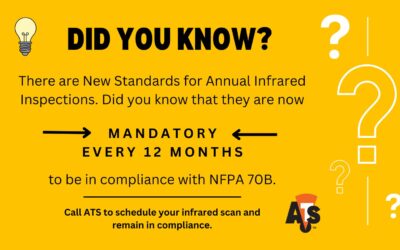<TRANSCRIPT>
Hey there everybody! Bob Craft here for Advanced Technology Solutions. Let me begin by saying that I am NOT a real medical doctor, and I don’t play one on TV either. None of what I say or show here should be taken as actual medical advice. Besides, nobody wants to see their real doctor come at them with a stethoscope like this.
We’ve all heard or said over the years that a good machinery condition analyst is like a doctor for machines. And yes, I’ve lost count of the number of times I’ve actually used this stethoscope to help me understand what’s going on inside the guts of a machine just like a doctor does for you when listening to your heart or lungs.
I’m sure we’re all familiar with the analogy that the lubrication community has rightfully used for years that the lubricant is the lifeblood of the machine. Drawing off a lubricant sample and sending it to a lab for analysis is really no different than when we have blood samples drawn or pee in a cup. The goal in all cases is to try to get an understanding of what’s really going on inside the system. Whether it’s looking for water, or coolant degrading the ability for the lubricant to do it’s job or excessive sugar, bad cholesterol, or some other problem-indicating constituent in our bloodstreams. Both scenarios lead to discovering bad things happening either inside the machine or in our body’s systems. But paying lip service to that analogy just isn’t enough.
I’ve addressed the extended PF Curve many times over the years when it comes to condition monitoring and evaluation of an industrial machine. But sometimes folks just don’t get just how important a regular condition monitoring program really is. Let’s quickly review the important points.
A running machine generally starts out in good functional or operational health, able to support production on-demand, at capacity, and within quality standards. This is true until some bad thing happens that won’t reverse or correct itself that puts the machine’s functional health on a downward trajectory. Traditional predictive maintenance doctrine says that somewhere on that downward trajectory we’re able to recognize the fact that the damage has occurred and hopefully get it corrected before it continues progressing to functional failure. I think we can all agree that the reality is the machines, like people, have multiple failure mechanisms which all progress at different rates and can be detected at different times once they’ve begun. Some giving us lots of time to plan and schedule different corrective action and others that require a more immediate response to prevent something really catastrophic from happening.
The real goal of a good condition monitoring and evaluation program should be to look to the data to gain proactive insights about root cause failure mechanisms that may be in play so that they can be corrected before the actual damage starts. That’s what leads us to the human body analogy. Changing the shape – I never think twice about the fact that every time I go to a doctor even for a scheduled exam or when I think I may have symptoms of something they take certain measurements every time I walk into the office. These data points can provide indications both leading up to something bad happening or can provide clues that something bad has already happened. Less frequently, and – depending upon one’s symptoms, family history or how long it’s been since the last time the data was collected – there’s a whole variety of testing that’s done at varying intervals. Some tests can identify root cause failure mechanisms in play as well as real damage that’s already started. And other tests are only effective after the damage has started and progressed to the point of detectability.
Treating myself as a machine, the analogy is very clear, in my case family history was against me and it was a combination of lab-based fluid analysis combined with process parameter monitoring that identified my situation. I was diagnosed with high blood pressure and high cholesterol just like both of my parents and all of my grandparents. For me it was recognized early enough that with diet and lifestyle changes supplemented by a couple of prescriptions, things came under control fairly quickly before any irreversible damage started. Today, my long term risk of clogged arteries leading to the bad thing happening is no different than anyone else’s my age. Proper detection and corrective action moved me from the green to yellow transition zone well back into the green zone. And regular condition monitoring continues, of course.
Going back to industrial machinery and system condition monitoring – the techniques we use are focused towards specific root cause failure mechanisms and damage indications. Some, like lubricant monitoring, vibration monitoring process pattern recognition and anomaly detection and temperature monitoring enable us to identify both root cause failure mechanisms and damage. While others are only effective once the physical damage has actually started.
Your life depends on what your medical provider has determined is going on within your body through periodic condition monitoring tests and activities. Your livelihood depends on what your condition monitoring and evaluation determines is going on within the guts of your production and supporting machinery.
So remember, this vidtorial is not intended as human medical advice, for that, please do consult your own personal health care provider, for machinery health monitoring and diagnostic advice, please contact us at ATS. Our experienced machinery and condition monitoring domain experts will be glad to help you with your machine health improvement program.
Now stay safe out there. And when you go home at the end of your shift, please do so with all your body parts intact. Me…I’m going to go outside, listen to parts of my car, because that will be music to my ears.
Bye for now.






0 Comments